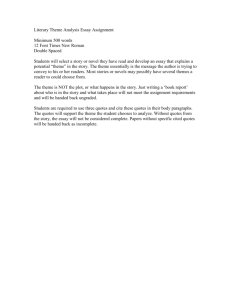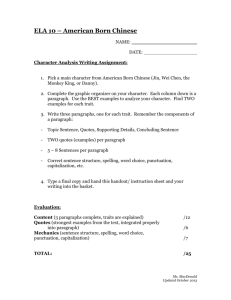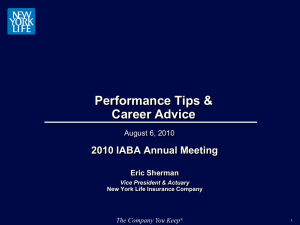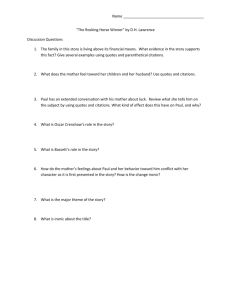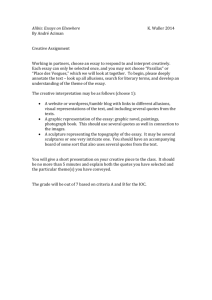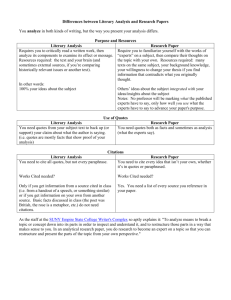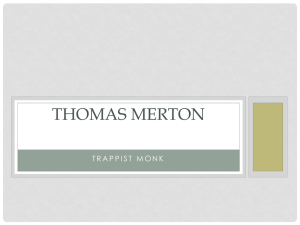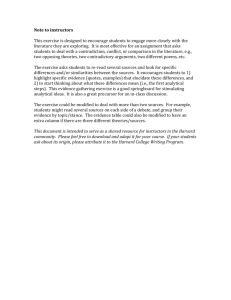Compare/Contrast: Themes Rubric
advertisement
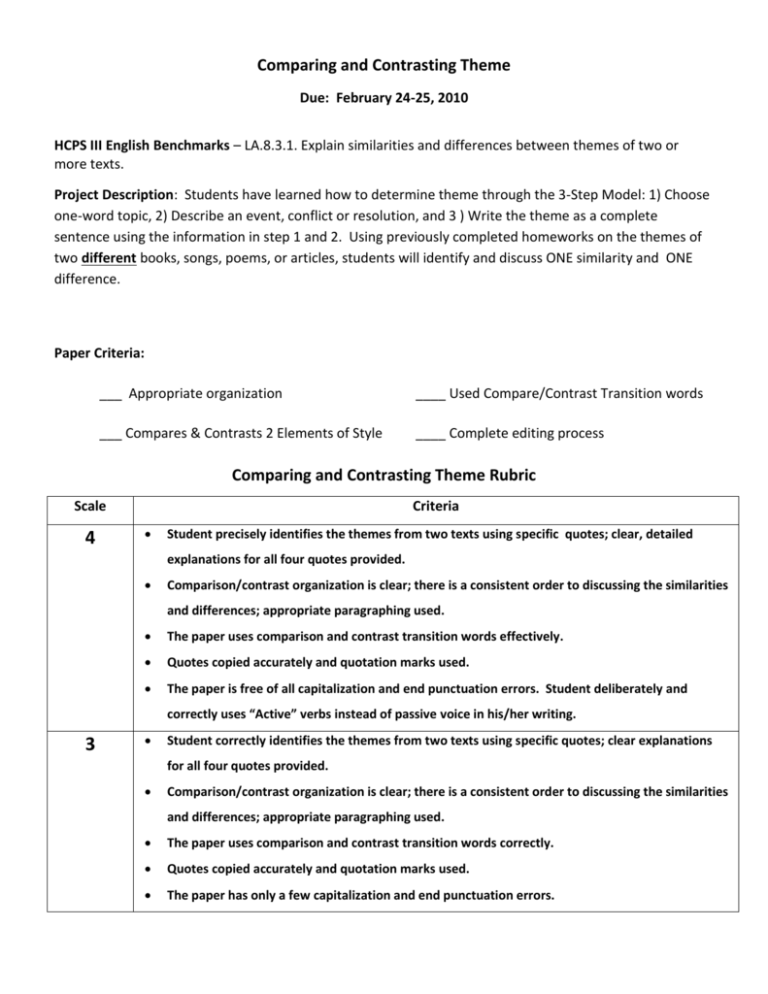
Comparing and Contrasting Theme Due: February 24-25, 2010 HCPS III English Benchmarks – LA.8.3.1. Explain similarities and differences between themes of two or more texts. Project Description: Students have learned how to determine theme through the 3-Step Model: 1) Choose one-word topic, 2) Describe an event, conflict or resolution, and 3 ) Write the theme as a complete sentence using the information in step 1 and 2. Using previously completed homeworks on the themes of two different books, songs, poems, or articles, students will identify and discuss ONE similarity and ONE difference. Paper Criteria: ___ Appropriate organization ____ Used Compare/Contrast Transition words ___ Compares & Contrasts 2 Elements of Style ____ Complete editing process Comparing and Contrasting Theme Rubric Scale 4 Criteria Student precisely identifies the themes from two texts using specific quotes; clear, detailed explanations for all four quotes provided. Comparison/contrast organization is clear; there is a consistent order to discussing the similarities and differences; appropriate paragraphing used. The paper uses comparison and contrast transition words effectively. Quotes copied accurately and quotation marks used. The paper is free of all capitalization and end punctuation errors. Student deliberately and correctly uses “Active” verbs instead of passive voice in his/her writing. 3 Student correctly identifies the themes from two texts using specific quotes; clear explanations for all four quotes provided. Comparison/contrast organization is clear; there is a consistent order to discussing the similarities and differences; appropriate paragraphing used. The paper uses comparison and contrast transition words correctly. Quotes copied accurately and quotation marks used. The paper has only a few capitalization and end punctuation errors. 2 Student correctly identifies the themes from two texts using quotes; explanations provided for all four quotes, but some may be incorrect or incomplete. Comparison/contrast organization is evident, but there may be inconsistencies in ordering the similarities and differences; appropriate paragraphing used. 1 Comparison and contrast transition words are missing or not used correctly. Quotes may be incorrectly copied and/or quotation marks not used. Paper contains some capitalization and/or end punctuation errors Student cannot identify the theme of a text; quotes and/or explanations are missing or highly inaccurate. Bonus Challenge: “Everyone’s a Critic” Comparison/contrast organization is not evident or highly inconsistent Paper contains many capitalization and/or end punctuation errors Pretend you are a book or music critic. You are writing your compare/contrast essay to a larger audience that wants to know which books or songs to buy. You must carefully choose your comparisons/contrasts and the examples that go with them to highlight the overall merits or shortcomings of the songs or books being compared. In other words, tell your audience the literary reasons why they should or should not buy the book or song. At the same time, YOUR writing needs to be entertaining with evidence of “voice” and active verbs. In addition, you need a lead that entices and a conclusion that brings the paper to a satisfying end.
